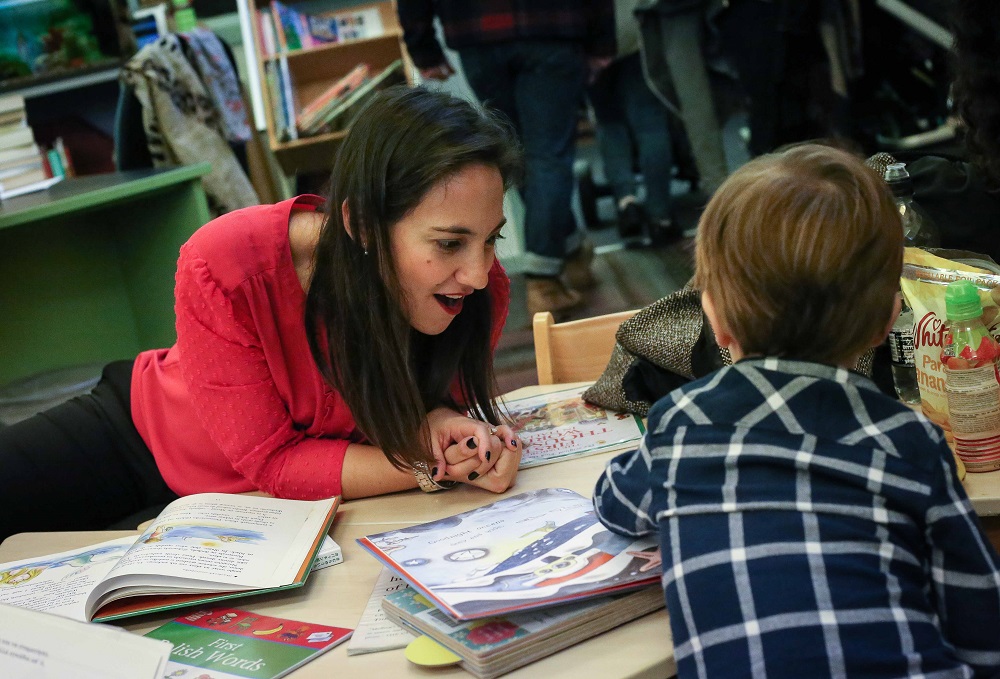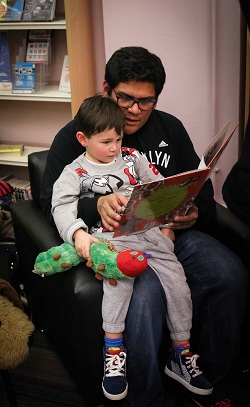How To Set Up A Multilingual Library In Your School: 7 Proven Tips

In this post, I am thrilled to welcome guest blogger Dr. Sabine Little. Sabine is a senior lecturer in languages education at the University of Sheffield, where her work explores the powerful connections between multilingualism, identity, and belonging. A former secondary school teacher of German and French, she now supports educators across the United Kingdom and beyond in creating inclusive, multilingual learning environments.
Sabine brings nearly a decade of hands-on experience helping schools develop multilingual libraries — an effort that has earned international recognition, including the Brenda Eastwood Award for Diversity and Inclusion. In this post, she shares seven practical ideas for setting up a multilingual library, based on what she’s learned from working with schools of all shapes and sizes.
I have been helping schools to set up multilingual libraries (or library sections) for nearly a decade now, and in that time, I have learnt that there are (nearly) as many ways to make it work as there are schools! In this blog post, I highlight seven ideas and issues faced along the way, hoping to facilitate different settings to find the most appropriate route for them.
1. Make a Plan and Shout About It
While you can absolutely start at any time, experience shows that it is easier to bring people along if certain events are used as hooks along the line. I am not much of a fan of “celebrating” multilingualism (we tend to celebrate things that are not normal, and I am all about normalising multilingualism, and shifting it from its celebratory status into one where it takes on everyday importance), but certain calendar events (International Mother Language Day, 25 February; World Book Day in early March; European Day of Languages, 26 September) can be used to mobilise and maintain interest in a multilingual library, either to announce something and work toward it, or to work toward it and then launch it on the day. Importantly, make your plan known! You want people to be invested, so talk to colleagues, talk to the kids, communicate to families, explain why multiliteracy development is important, and bring them along for the ride.
2. From Box to Room
If you are a single teacher hoping to influence a big school, it might seem daunting to argue for a big, schoolwide project, so don’t let perfection be the enemy of progress! Start where you have control, and if that is a box in your classroom, then that’s absolutely fine. As you progress, you will hopefully bring along others, ultimately leading to wider change.
If, on the other hand, you have the whole school behind you, fantastic! You can go all out — try to create a plan that assigns others responsibility (including children and parents), so that it becomes a whole-school affair.

3. Know Your School
This might sound obvious, but know what you are looking for to stock your library. Are you in a setting that has a pretty stable, small range of heritage, home, and community languages, or are you losing and gaining transient students every week? From this knowledge, build the list of languages you are looking for.
4. Where Do the Books Come From?
This is the question I get asked most often, and yes, it’s a big question. While some schools manage to set aside a budget for a multilingual library, the reality is that, for most schools, creating a library draws on a wide variety of ideas — so many that I have decided to make this point with subpoints, to gather some of them:
-
-
Ask parents for book donations. There is a thriving underground market for multilingual children’s books, often through hearsay and community groups, where books get passed along, shared, and sold, but not all families are well networked. Asking families to donate books no longer needed shows that home languages are valued in school, and children see their books getting good use.
-
Organise a fundraising event specifically for multilingual books. I talk about events further below — use any of them, or even a standard cake sale, to raise funds for the multilingual library. If you are also getting book donations in, use the funds to plug language gaps.
-
“Bring a book home” — I ran this initiative for several years in Sheffield, inviting people going on holiday to pick up one or more books while abroad. It distributes costs, makes people aware of the initiative, and takes advantage of heritage language families who are able to travel to countries where the language is spoken.
-
 5. Connect to the Wider Community
5. Connect to the Wider Community
Look for local heritage language schools, university departments, community groups, and so on. You might get a donation of books, you might get someone to agree to come and run a multilingual storytelling session, you might get someone willing to look over the books you have to make sure they are appropriate. Parents are part of this group, too.
6. Cataloguing and Running Decisions
Decide on a way to keep track of your stock. How this might be done best will depend on the size of your library— while a box in a classroom might function on old-fashioned index cards, a school library will need something more sophisticated. Integrating with your existing school library would be your best option, to ensure the multilingual section is not “othered.”
Also decide how books will be read: Will children be able to borrow them and take them home? Will you run dedicated reading sessions with parents in school? My past research showed that parents are particularly keen to bring the home language to formal (school and library) settings, but scheduled sessions will disadvantage parents with work schedule clashes. Children might not be able to read books independently, due to asynchronous biliteracy. If books do go home, prepare for attrition, but this is common across all library settings.
7. Think Metaphorical as Well as Physical Space
Having books on shelves is one thing, but integrating multiliteracy development into the day-to-day running of the school is another. Make sure the library stays at the forefront of people’s minds. Here are a few ways:
-
- Post photos of children reading the books on walls throughout the school.
- Weave the library into conversations about reading.
- Conduct running events.
- Encourage children to do book reviews.
Work with children to integrate their views on what the library should look like and do.
This blog post is an (extremely) abbreviated version of the “Guidelines for Setting Up a Multilingual Children’s Library,” where further resources (a reading passport, artwork, etc.) can also be downloaded. The wider website has templates for multilingual activities and tips for multilingual storytelling.


